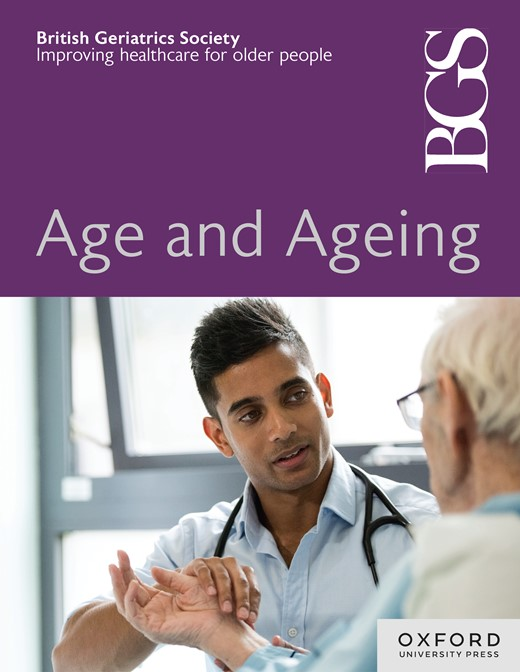Differences in Presentation of Ischaemic and Haemorrhagic Stroke: A Systematic Review and Meta-Analysis
IF 6
2区 医学
Q1 GERIATRICS & GERONTOLOGY
引用次数: 0
Abstract
Background Stroke is the 2nd leading cause of death worldwide. Stroke is diagnosed by the combination of clinical symptoms and signs, and neuroimaging. Clinical features may differ between the subtypes of ischaemic and haemorrhagic stroke. We investigated whether there are differences in clinical presentation of acute ischaemic and haemorrhagic stroke. Methods We conducted a systematic review and meta-analysis according to the PRISMA statement. Inclusion criteria were (1) cohort, cross-sectional, case-control, randomised controlled trial, systematic review or meta-analysis; (2) consecutive admissions of adult individuals with an acute ischaemic or haemorrhagic stroke, confirmed by neuroimaging and (3) comparisons possible between stroke subtypes in acute stroke symptom(s). A random-effects model was used for our analyses. Results We included 58 studies (n=12,878,716; ischaemic stroke=10,814,293; haemorrhagic stroke=2,064,423). The mean age of participants was 65.54+13.84 with 44.98% women. In haemorrhagic stroke, altered GCS occurred more frequently than in ischaemic stroke (OR, 3.93 [95% CI, 2.81–5.49]; AIS/ICH=382,110/59,877, 40 studies), as did headache (OR, 3.34 [95% CI, 2.68–4.17]; AIS/ICH=22,413/6,018; 43 studies), seizure (OR, 2.42 [95% CI, 1.62–3.65]; AIS/ICH=10,427,262/2,004,681; 20 studies), vomiting (OR, 3.82 [95% CI, 2.62–5.57]; AIS/ICH=7,736/3,225; 25 studies), neck stiffness (OR, 5.21 [95% CI, 2.22–12.21]; AIS/ICH=511/168; 3 studies), syncope (OR, 2.95 [95% CI, 2.12–4.12]; AIS/ICH=2,427/494; 6 studies) and dizziness (OR, 1.33 [95% CI, 1.05–1.68]; AIS/ICH=4,730/1,213; 11 studies). Hemiplegia occurred more frequently in ischaemic stroke (OR, 0.67 [95% CI, 0.49–0.91]; AIS/ICH=15,857/4,338; 31 studies) than haemorrhagic stroke, as did ataxia (OR, 0.73 [95% CI, 0.61–0.86]; AIS/ICH=7,741/2,244; 8 studies) and morning onset (OR, 0.41 [95% CI, 0.32– 0.54]; AIS/ICH=2,721/495; 4 studies). Conclusion This review focused on synthesizing existing evidence on differences in clinical presentation between ischaemic and haemorrhagic stroke. It suggests there are substantive differences in stroke symptoms between these subtypes. These results may provide insights into future directions for clinical prediction tool development.缺血性和出血性中风的表现差异:系统回顾与元分析
背景 脑卒中是全球第二大死亡原因。脑卒中的诊断需要结合临床症状和体征以及神经影像学检查。缺血性和出血性中风亚型的临床特征可能有所不同。我们研究了急性缺血性和出血性卒中的临床表现是否存在差异。方法 我们根据 PRISMA 声明进行了系统回顾和荟萃分析。纳入标准为:(1) 队列、横断面、病例对照、随机对照试验、系统综述或荟萃分析;(2) 连续入院的急性缺血性或出血性脑卒中成年患者,并经神经影像学证实;(3) 脑卒中亚型之间急性脑卒中症状的比较。我们采用随机效应模型进行分析。结果 我们纳入了 58 项研究(n=12,878,716;缺血性中风=10,814,293;出血性中风=2,064,423)。参与者的平均年龄为 65.54+13.84 岁,女性占 44.98%。与缺血性卒中相比,出血性卒中更常发生 GCS 改变(OR,3.93 [95% CI,2.81-5.49];AIS/ICH=382,110/59,877,40 项研究),头痛也是如此(OR,3.34 [95% CI, 2.68-4.17]; AIS/ICH=22,413/6,018; 43 项研究)、癫痫发作(OR, 2.42 [95% CI, 1.62-3.65]; AIS/ICH=10,427,262/2,004,681; 20 项研究)、呕吐(OR, 3.82 [95% CI,2.62-5.57];AIS/ICH=7,736/3,225;25 项研究)、颈部僵硬(OR,5.21 [95% CI,2.22-12.21];AIS/ICH=511/168;3 项研究)、晕厥(OR,2.95 [95% CI, 2.12-4.12]; AIS/ICH=2,427/494; 6 项研究)和头晕(OR, 1.33 [95% CI, 1.05-1.68]; AIS/ICH=4,730/1,213; 11 项研究)。缺血性卒中发生偏瘫(OR,0.67 [95% CI,0.49-0.91];AIS/ICH=15,857/4,338;31 项研究)的频率高于出血性卒中;共济失调(OR,0.73 [95% CI, 0.61-0.86]; AIS/ICH=7,741/2,244; 8 项研究)和晨起发病(OR, 0.41 [95% CI, 0.32- 0.54]; AIS/ICH=2,721/495; 4 项研究)。结论 本综述侧重于综合缺血性和出血性卒中临床表现差异的现有证据。它表明这两种亚型的卒中症状存在实质性差异。这些结果可为临床预测工具的未来开发方向提供启示。
本文章由计算机程序翻译,如有差异,请以英文原文为准。
求助全文
约1分钟内获得全文
求助全文
来源期刊

Age and ageing
医学-老年医学
CiteScore
9.20
自引率
6.00%
发文量
796
审稿时长
4-8 weeks
期刊介绍:
Age and Ageing is an international journal publishing refereed original articles and commissioned reviews on geriatric medicine and gerontology. Its range includes research on ageing and clinical, epidemiological, and psychological aspects of later life.
 求助内容:
求助内容: 应助结果提醒方式:
应助结果提醒方式:


